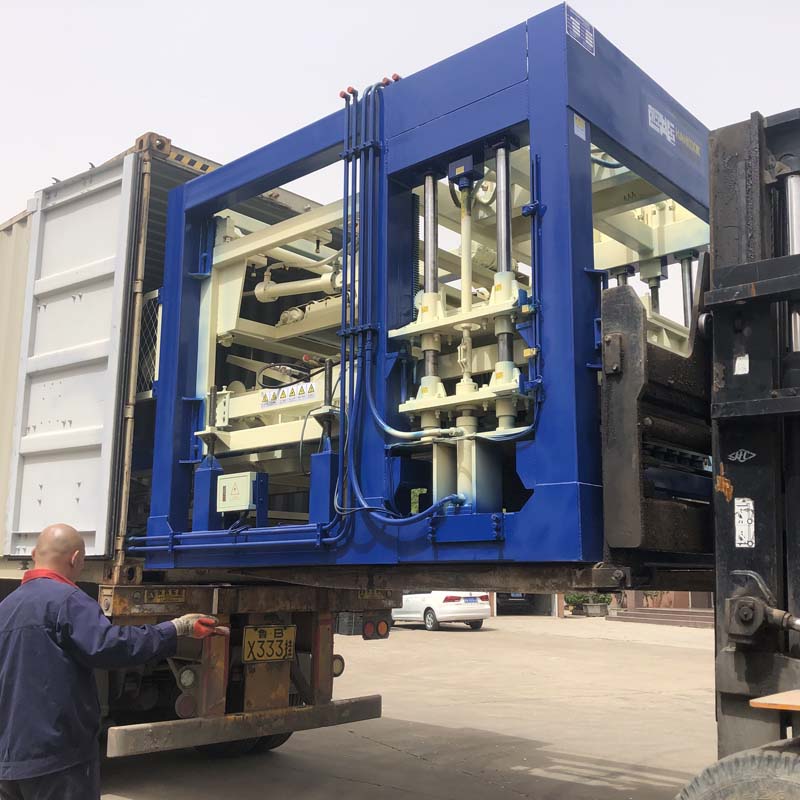
Image source :Aiweiblockmachine
Title: Comparative Analysis: Full-Automatic vs. Semi-Automatic Block Production
Introduction
In the dynamic landscape of block production in the construction industry, the choice between full-automatic and semi-automatic block production methods is a pivotal decision for manufacturers. Each approach has its advantages and considerations, influencing factors such as efficiency, labor requirements, and overall production costs. In this comparative analysis, we will delve into the key differences between full-automatic and semi-automatic block production, exploring the benefits and challenges associated with each method.
### 1. **Automation Level:**
#### Full-Automatic Block Production:
– **Advantages:**
– High level of automation throughout the entire production process.
– Minimal operator intervention required during material handling, mixing, molding, compaction, and curing.
– Continuous operation, leading to higher production rates and efficiency.
– **Challenges:**
– Higher initial investment due to advanced automation systems.
– May require specialized training for operators to handle advanced control systems.
#### Semi-Automatic Block Production:
– **Advantages:**
– Greater operator control and flexibility in the production process.
– Generally lower initial investment compared to full-automatic systems.
– Suitable for smaller-scale operations with varying production requirements.
– **Challenges:**
– Relies more on manual labor for certain tasks, potentially leading to variations in quality.
– Limited production rates compared to full-automatic systems.
### 2. **Labor Requirements:**
#### Full-Automatic Block Production:
– **Advantages:**
– Significantly reduced dependence on manual labor.
– Operators focus on monitoring, maintenance, and occasional adjustments.
– **Challenges:**
– Initial investment may be higher due to advanced automation, but long-term labor cost savings can offset this.
#### Semi-Automatic Block Production:
– **Advantages:**
– Allows for greater operator involvement, offering potential employment opportunities.
– Well-suited for operations with a readily available labor force.
– **Challenges:**
– Higher labor requirements compared to full-automatic systems.
– Potential for variations in block quality based on operator skill and consistency.
### 3. **Flexibility and Customization:**
#### Full-Automatic Block Production:
– **Advantages:**
– Highly repeatable and consistent block production.
– Well-suited for large-scale operations with consistent product specifications.
– **Challenges:**
– Limited flexibility for rapid changes in block design or size.
#### Semi-Automatic Block Production:
– **Advantages:**
– Allows for greater flexibility in adjusting block specifications.
– Well-suited for smaller operations producing diverse block types.
– **Challenges:**
– May require more manual adjustments, leading to increased setup times.
### 4. **Energy Efficiency:**
#### Full-Automatic Block Production:
– **Advantages:**
– Integration of energy-saving features and advanced control systems.
– Efficient use of energy, contributing to sustainability goals.
– **Challenges:**
– Initial investment in energy-efficient technologies may be higher.
#### Semi-Automatic Block Production:
– **Advantages:**
– Generally lower energy consumption compared to full-automatic systems.
– Suitable for operations with budget constraints on energy-efficient technologies.
– **Challenges:**
– May lack advanced energy-saving features found in full-automatic systems.
### 5. **Initial Investment and Return on Investment (ROI):**
#### Full-Automatic Block Production:
– **Advantages:**
– Higher initial investment pays off through increased efficiency and labor savings.
– Potentially faster return on investment for large-scale, consistent production.
– **Challenges:**
– Initial capital outlay may be a barrier for smaller operations.
#### Semi-Automatic Block Production:
– **Advantages:**
– Lower initial investment allows for easier entry into the market.
– Suitable for operations with moderate production demands.
– **Challenges:**
– May result in higher long-term operational costs due to increased labor requirements.
### Conclusion:
The choice between full-automatic and semi-automatic block production methods depends on the specific needs and circumstances of the manufacturer. Full-automatic systems offer unparalleled efficiency and consistency but come with a higher initial investment. On the other hand, semi-automatic systems provide flexibility and a lower entry barrier but may require more manual labor and result in slightly lower production rates. The decision should align with the scale of production, desired levels of automation, and long-term business objectives. Ultimately, both approaches have their merits, and the optimal choice depends on the unique requirements of the block manufacturing operation.
